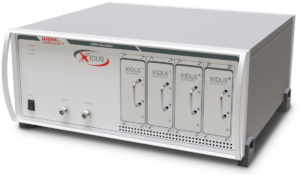Receiver Manufacturing
Professional GNSS Receiver Manufacturing typically requires a high level of precision and reliability, such as Xidus GNSS Simulator provides. GNSS receivers are developed for a wide range of applications: surveying, agriculture, forestry, automotive positioning, and defence. And as satellite navigation is used increasingly – just think of autonomous driving – the number of applications will become even greater in the future.
Modern systems often benefit from multi-frequency or multi-antenna usage. This is why state-of-the-art Receiver Manufacturing does use those. And this is why we at WORK Microwave aimed to develop a solution which enables multi-frequency and multi-antenna test scenarios: Xidus GNSS Simulator.
Questions on Xidus? Contact Michel!
New: Galileo ICD version 2.0!
- Secondary synchronization pattern (SSP) for correlating a local replica of the encoded pattern configurations.
- Reduced Clock and Ephemeris for computing an initial position fix in case a full ephemeris.
- Reed-Solomon Outer Forward Error Correction for robust decoding of I/NAV Clock and Ephemeris Data (CED).
No erroneous effects at GNSS Receiver Manufacturing
The more accurate positioning performance must be, the more it should use navigation signals broadcasted on different frequencies. These allow to minimize the erroneous effect of the ionosphere when, for example, solar winds hit the earth.
Inclination measured using multiple antennas
Using multiple antennas for the reception of the same signal makes it possible to measure inclination of an airplane or an object like an oil platform.
With a Xidus GNSS Simulator, Receiver Manufacturers can simulate multi-frequency and multi-antenna scenarios. Hence they are able to develop their receivers for nearly any thinkable application.






